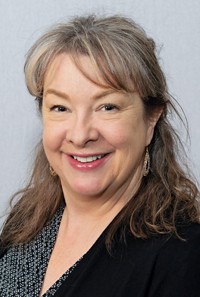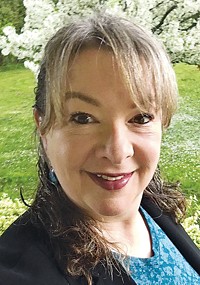Advertisement
Grab your lab coat. Let's get started
Welcome!
Welcome!
Create an account below to get 6 C&EN articles per month, receive newsletters and more - all free.
It seems this is your first time logging in online. Please enter the following information to continue.
As an ACS member you automatically get access to this site. All we need is few more details to create your reading experience.
Not you? Sign in with a different account.
Not you? Sign in with a different account.
ERROR 1
ERROR 1
ERROR 2
ERROR 2
ERROR 2
ERROR 2
ERROR 2
Password and Confirm password must match.
If you have an ACS member number, please enter it here so we can link this account to your membership. (optional)
ERROR 2
ACS values your privacy. By submitting your information, you are gaining access to C&EN and subscribing to our weekly newsletter. We use the information you provide to make your reading experience better, and we will never sell your data to third party members.
Comment
ACS Comment: Only you can prevent truth decay
by Preston MacDougall, chair, ACS Committee on Public Relations and Communications
May 6, 2022
| A version of this story appeared in
Volume 100, Issue 16

No, I’m not writing about forest fires. Did the title of this Comment spark a memory of the US Department of the Interior’s long-running marketing campaign featuring Smokey Bear? Smokey is an advertising icon that has been in use since the 1940s. His memorable character and catchy taglines are key to his effectiveness in communicating to the public the need to prevent accidental forest fires.
Communication is something that humans do all day long, sometimes even while they sleep. But most people struggle at some point to communicate effectively, especially when sharing our scientific expertise with the public. Alan Alda may be best known for his acting work, especially as Hawkeye Pierce in the television program M-A-S-H, but he also directs his talents toward improving science communication. In fact, he has received much more recognition from scientific societies than from acting ones over the past two decades. This includes the American Chemical Society’s James T. Grady–James H. Stack Award for Interpreting Chemistry for the Public in 2013.
Alda’s efforts include the long-running podcast Clear+Vivid about improving the art of communication. I highly recommend listening to this series if you don’t already. I initially planned to title this comment “Vivid” but purposely chose a more cryptic one instead. Scientists are suckers for trying to understand things, so hopefully my strategy worked, and you have kept reading to discover the inspiration of the last two words of the title: truth decay.
Truth decay is a clever play on words that I first heard during a plenary talk at an American Association for the Advancement of Science meeting. It is also the title of a book published in 2018 by Rand, a global policy think tank. Rand defines truth decay as the “diminishing role of facts and analysis in American public life,” and the book successfully explains how over the past two decades this has led to public uncertainty and disengagement.
For scientists, truth decay can be especially painful to watch—our careers are dedicated to taking experimental measurements, analyzing data, and sharing our findings with others to contribute to the body of truthful knowledge about the physical world. To protect against truth decay, all of us should remember, as Alda’s podcast title emphasizes and Smokey exemplifies, that science communication and public outreach are most effective when they are clear and vivid—clear to make sure that the message is understood and vivid to capture and keep the audience’s attention.
I first learned this from faculty at the Alan Alda Center for Communicating Science at Stony Brook University when I was training to become an ACS Expert almost a decade ago. The ACS Experts program gives reporters access to highly trained scientists who help journalists understand the science they are reporting and provide comments to include in articles, among other support. My training included improv activities that you’d expect in acting school and editing exercises you’d expect in a journalism class. As a result, I became a more clear and vivid communicator, and the things I learned still help me when I teach or speak at public outreach events.
Former ACS President Katie Hunt was in my ACS Experts cohort, and she brought many of us to tears as she explained why an object she was pretending to hold had a place of honor in her office. Excellent communication has remained Hunt’s modus operandi. She spoke at ACS Spring 2022 about communication’s importance at the Committee on Public Relations and Communications symposium that I cochaired with Sue Cardinal, a science, technology, engineering, and mathematics librarian from the University of Rochester. In the abstract for her talk, Hunt wrote that effective communication isn’t a 50/50 deal—in which both parties are equally involved—it is 100/100. Mathematically, this isn’t possible, but her presentation was vivid, and she made it clear that for effective communication to occur both sides must be fully involved.
The symposium also featured Andy Brunning, a chemistry educator who creates the Compound Interest infographics, and David Goodsell, a structural biologist at Scripps Research Institute and an accomplished biomolecular artist. They both made the point that for chemists, being clear and vivid is as critical to our visual and graphic communication as it is to our verbal communication.
Currently, I am chair of the ACS Committee on Public Relations and Communications. My committee recognizes public relations activities coordinated by volunteers in ACS local sections and also chooses a volunteer to receive the ACS Helen M. Free Award for Public Outreach each year. Volunteers don’t get paid, by definition, but it is always nice for work to be acknowledged. So, if you know someone who does an outstanding job of promoting chemistry in your community—someone who is clear and vivid with their communication—please nominate them for a future Helen M. Free Award so that ACS can celebrate their wonderful efforts.
Views expressed are those of the author and not necessarily those of C&EN or ACS.




Join the conversation
Contact the reporter
Submit a Letter to the Editor for publication
Engage with us on Twitter